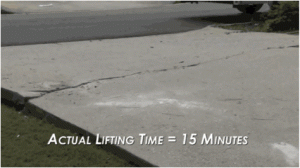Formulating Tip: How to get consistent foam densities
Posted in: Formulating Tip of the Day by admin on October 29, 2010 | No Comments
Most if not all polyols and other raw materials contain background water. The blending process can also introduce water to your polyol side. You can either measure the background water before adding your blowing agent or just formulate with water as co-blowing agent so you can bring up the amount of water to a fixed level above the background level. Then you can always use a fixed amount for your non-water blowing agent. It is better to formulate using some water because it is low molecular weight and you need less of it. Thus, your index would be more consistent because the amount of water is figured into the index. If you choose to vary your amount of non-water blowing agent to compensate for the blow contribution of the background water, you will use larger amounts of blowing agent because it is higher molecular weight, which would lead to a larger fluctuation of the index in a system that is designed to be 1:1 ratio by volume.
Water Blown Soil Stabilization Foam
Posted in: Got Formula! by admin on September 10, 2010 | No Comments
The goal of the project is to develop a 115 psi compressive strength free rise polyurethane foam. In the formulation database was a 4.75 pcf polyurethane formula that already had 92 psi compressive strength. We hypothesized that by increasing the density by 1 pcf, we would meet the target. The GoFormulate™ simulator was used to determine the amount of water needed to make a 5.75 pcf density. After reducing the amount of water, the polyol blend needed readjustment to maintain the isocyanate index and the required 1:1 ratio by volume. This precalculation was done in less than 10 minutes. The polyol component was made and a foam was made for testing. The experimental density was 5.74 pcf. The compressive strength was 123 psi after 18 hrs. This demonstrates once again the speed and accuracy with which foam formulations can be made using the GoFormulate™ simulation tool.
Fillers and Wetting Agents
Posted in: Formulating Tip of the Day by admin on | No Comments
When using fillers, pre-add wetting agents before adding solids to help disperse particles. This helps deagglomerate the powders quicker.
High Density Injectable Foam
Posted in: Got Formula! by admin on | No Comments
This formula is targeted for tunnel stabilization. It was developed in 30 minutes from the start of simulation to the testing of the formula. Density was 55 pcf. The foam had a cream time of 6 minutes and tack free in 8 minutes.
How to reduce %NCO and decrease viscosity
Posted in: Formulating Tip of the Day by admin on August 11, 2010 | 1 Comment
To reduce the %NCO and viscosity of polymeric MDI, add a non-reactive, dry plasticizer.


